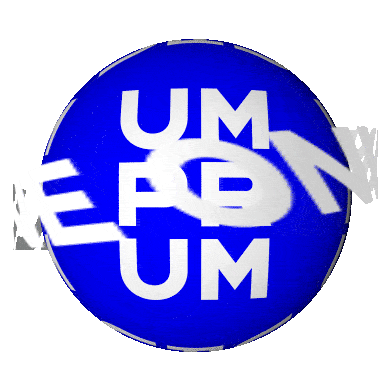


Reflecting on ordinary things
We talked about the stimuli and challenges of life and work with porcelain with Antonín Tomášek. This original and unconventionally thinking artist is also a person who, as a university teacher, passes on his unusual creative and life philosophy to the next generation. He teaches his students how to look carefully around them and how to use the knowledge gained in their artistic work.
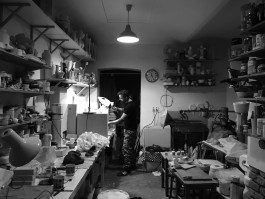
Atelier of Antonín Tomášek, Školská 28, Prague, A. Tomášek's photo archive
What did your studies at UMPRUM give you in your life?
The time was important, not only what and where I studied. It was specific and groundbreaking, pre-internet. The time of the still ongoing social euphoria of the post-revolutionary 90s and the general relaxation. I had experienced totalitarianism as a child, but the change made me aware that there could still be another world.
There was a creative climate and a generational affinity throughout UMPRUM at that time, perhaps thanks to the population boom, which caused a large number of talented people to enter. Even though the conditions in the workshops were at a different, I would say lower level than they are today, studying in an inspiring society was a challenge, a stimulus, a motor for work, and it was essential for what I was doing.
Is it possible to compare the teaching system of that time with today's from a teacher's point of view?
Studies, relationships, friendships, one needs to have enough time for all that and there is not enough of that in today's world! But it's the basics. In general, curricula and the ratio of studio work versus increasing theory are changing. There is more teaching of 3D programs, soft skill areas, and design thinking methods that are part of today's professional world and part of the designer's kit. In the two-thousands, this was in its infancy in our country and perhaps all the more reason to engage more intensively with the material.
Despite this, the interest of the younger generation in the material and the authenticity of the creative process is great. They go to schools more or less for the following reasons. Of course, everything needs to be kept in balance in terms of theoretical cultivation, it is essential to pass on knowledge of history and philosophy. But I feel that the core is in the creative process. It's the distraction that bothers me. One cannot create in art schools on the basis of a timetable where one is in the studio for an hour, in a lecture for an hour, and then in the studio again, as often happens. The choppy model is unfortunate because it takes away focus, and concentration, which is increasingly rare. We all struggle with it, perhaps because of ubiquitous technology - phones that grab our attention anywhere, anytime, anyhow, and teleport our minds somewhere else.
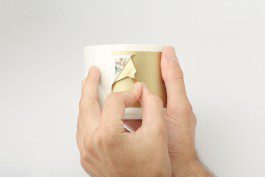
Islas Fortunate (thin-walled porcelain cups), concept and design A. Tomášek, porcelain factory manufacturer Rudolf Kämpf, 2021, Photo Michal Ureš

Installation Islas Fortunate, Designblok 2021, Photo Tomáš Souček
When you had the opportunity to study abroad, did you feel a similar atmosphere as at UMPRUM?
I found the freedom that I experienced at UMPRUM to be somewhat appealing in comparison to what I encountered in Sweden, for example, during my internship. In Stockholm, they had established, and very disciplined teaching systems. I was blown away by the world of Scandinavian art schools. When an outsider comes in, they are trying to do their best, they don't want to fail, they don't want to fail, and they want to learn something at the same time. Apart from the teaching structure, I was fascinated by the facilities and the expertise. Students had access everywhere and there was always someone there to help them. When I came back to Prague, I appreciated on the contrary a certain wildness, even chaotic, disorder that had creative potential. Many people from the West also came to us because of this, because UMPRUM at that time offered raw authenticity alongside quality. I consider it unique that the school was not built on a bureaucratic system, but rather on the creative spirit of the master workshop studio craftsman.
Can you describe your path in the field that you are involved in?
I grew up in Karlovy Vary, where traces of porcelain production are everywhere. Remnants of post-mining kaolin created ponds there, where we went to bathe and hold battles. In general, my story is connected with this "white mud".
I am one of the last to graduate from the secondary ceramic school in Karlovy Vary specializing in porcelain, I then continued to university and stayed in the field. I utilize the broad spectrum of my experiences in my practice, in cooperation with industry, in pedagogical activities, the organization of various events such as symposia and the like.
In Karlovy Vary, unlike UMPRUM, we had the utmost professional facilities and staff at the school who were able to define the methodology. The bar was set high, starting with the staff culture of putting on white coats, cleaning the space, order in the tools, and so on. The highly disciplined environment was a strong formative element for many of us, and it became a kind of code for colleagues who then worked as modelers. For me, it was a benefit in college. I no longer asked how, but why and what I wanted to do.
The lack of technology and materials at UMPRUM forced me to turn directly to various manufacturers. De facto, most of the works I did at UMPRUM were created directly in the environment of the factory. In the Karlovy Vary region, I created a network of contacts with specialists in the factories for the future. I still work with many of them today and our meetings have moved from a certain professional respect to friendship. I am always interested in what is new, where the industry is developing technologically, and how it is responding to the various crises of today. The aforementioned Scandinavian model would probably not have led me to do so.
At the end of the 1990s, the UMPRUM gradually began to assemble equipment and a programme for firing porcelain, initiated by professors Václav Šerák and Daniel Piršč. In retrospect, I see that I came to the right place at the right time!
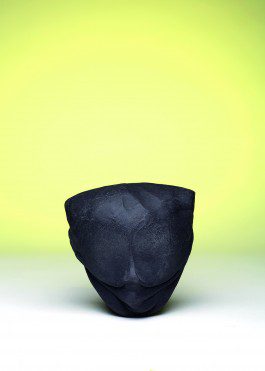
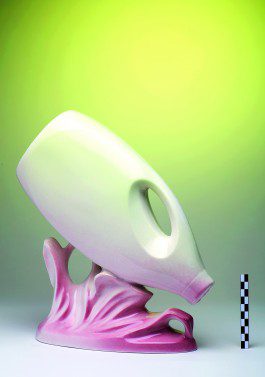

Buffalo head, 2021, Photo Void Pictures
Fish (Fishing Collection), 2021, Photo Void Pictures
Blocks, 2021, Photo Void Pictures
Has it affected your teaching?
After these experiences, when working with students, I realize how important self-identity and extracurricular activities are during studies, and how necessary it is to engage with the field, and the process, and not only to fulfill the requirements of the studio. The specificity of the Czech environment is in a certain localness. It is essential for students to have an idea of what is going on outside. From today's point of view, it is important to be able to update oneself naturally. One of the possibilities is, for example, contact with foreign experts, technologists, and artists. In workshops, we can observe how they think and what they do.
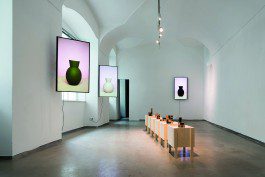
Antonín Tomášek's exhibition in Kvalitář Gallery, Prague, 2021, Fluser Photography Studio
Is that why you organize symposiums or did something else lead you to it?
It is healthy when one attaches to one's work and to one's life the knowledge that there are many things that are happening elsewhere, perhaps differently and better. The field can develop and move forward by allowing people from other landscapes, contexts, and cultural frameworks into it, who can bring a certain difference. Not to imitate, but to be much more aware of who we are. Sharing in the form of symposia is for me one of the ways to counteract small-mindedness and blind patriotism in the Czech environment. It opens our minds and has the potential to put our feet on the ground.
I organize the Keep in Touch symposia you are talking about every two years with the support of the Faculty of Art and Design at Jan Evangelista Purkyně University in Ústí nad Labem. The event takes place in the Experimental Ceramic Studio in Dubí, in the workshops of the Ceramic Design Studio, of which I am the head. What we are ambitiously trying to do is already suggested by the name itself, which means "to be in connection" or "we are in touch with ourselves". Not only in our knowledge of technology, but also in our personal relationships. We are building on the symposia for students started by my predecessor, Associate Professor Pavel Jarkovský.
After taking over the leadership of the studio, I redefined the rather narrow format of the student symposium and gave it its current name. I see it as an opportunity for those who are at the starting line. Students and recent graduates need space. There are not many of these events happening in the Central European environment, so it made sense to continue, especially since we have good technological facilities. Gradually, a pro-bonded international network of creators is emerging from Japan, Korea, China, and Taiwan, through the Baltic republics, and to Western Europe.
It takes a lot of energy and effort to organize, but the reward is the opportunity for dialogue. The general public also has access. We have our audience, although covid has stepped in quite intensively. People and four lecturers from foreign universities came to this year's event. In today's climate, I find that incredible. The event culminated in an exhibition at the Museum of Decorative Arts, which I see as a confirmation of the appropriateness of the chosen format.
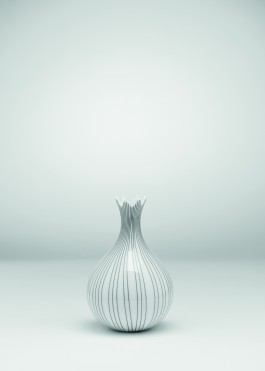

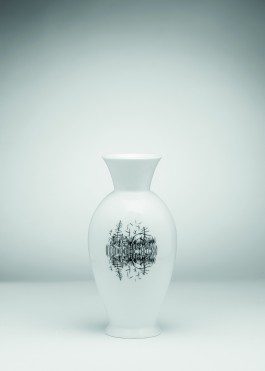
Onion, 2006, Studio TABLO, Photo Void Pictures
Turf flower pots, 2013, Studio TABLO, Photo Void Pictures
Amphora, 2009, Whitefruits, Photo Void Pictures
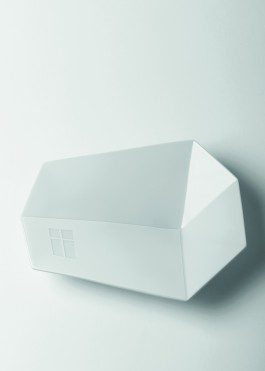
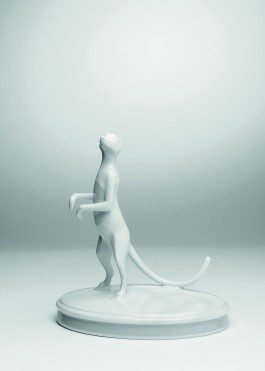
Home, 2005, Whitefruits, Photo Void Pictures
Meerkat, 2005, Studio Qubus, Photo Void Pictures
So the interconnectedness of the various factors is relevant to you.
During my studies, I discovered porcelain not only as a material, but I also like its story, historical, Asian, and European. I was fascinated by the simple nobility. I was fascinated by how porcelain has massively entered our homes and our everyday life. I began to think through it and found that thinking about ordinary things helped me to understand what was happening to society today. For me, thinking through the materiality of an object is a way of concentrating on what I am experiencing and living through.
Would you call yourself a designer?
In general, yes, I use the tools of design, but I could also be seen as a ceramicist because I work with material and craft references. I am someone who has focused my practice on porcelain and ceramics and added other layers of thought to it.
How would you define your work that extends beyond design into the realm of fine art?
For me, it is subconsciously important to think about objects, people, and situations in which they find themselves together. This is true not only in my free creative work but also in my design I always try to implement a certain added conceptual value. I appreciate when the work is straddled in time and can lend a practical helping hand as well as being a space for story and imagination.
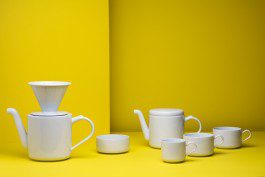
SOLO product line (Small Object & Large Object) 2020, Tea set + Coffee dripper, concept and design A. Tomášek, porcelain factory manufacturer Rudolf Kämpf, 2021, Photo Void Pictures
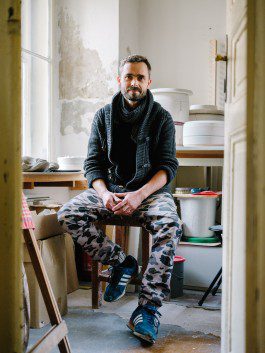
MgA. Antonín Tomášek (1978, Ostrov nad Ohří) graduated from the Secondary Technical School of Ceramics in Karlovy Vary (1994-1997) and the Academy of Arts, Architecture, and Design in Prague in the studio of Ceramics and Porcelain led by prof. Václav Šerák and then doc. By Pavel Knapek (1999-2005). He also studied ceramics at the UJEP Institute of Fine Arts in Ústí nad Labem with doc. Pavel Jarkovský (1997-1999) and was on a student exchange program at Konstfack - University of Arts, Crafts and Design (2003). Together with Gabriel Vach, they formed the well-known creative duo Whitefruits (2005-2010). Since 2014 he has been leading the Ceramics Design Studio at the Faculty of Art and Design at the J. E. Purkyně University in Ústí nad Labem (FUD UJEP). Since 2014 has been organizing the K.I.T. International Porcelain Symposium Keep in Touch. In his artistic work, he focuses on design and fine art, with porcelain or ceramic clay as a means of expression. He lives and works in Prague, Ústí nad Labem, and Dubí near Teplice.
Interview conducted by Milan Hlaveš
Interviews with successful graduates of UMPRUM within the framework of the Czech Presidency's of the The Council of the European Union were supported by the Centralized Development Projects of the Ministry of Education and Culture of the Czech Republic.